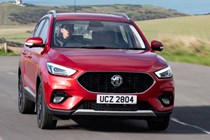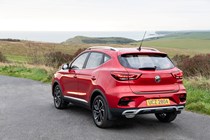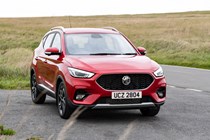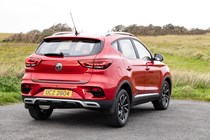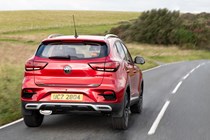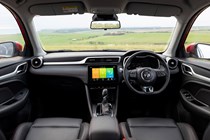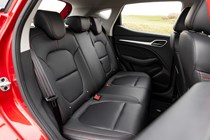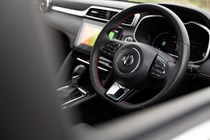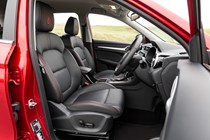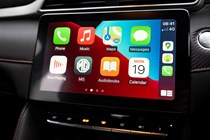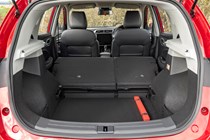
MG ZS SUV (2017-2024) engines, drive and performance
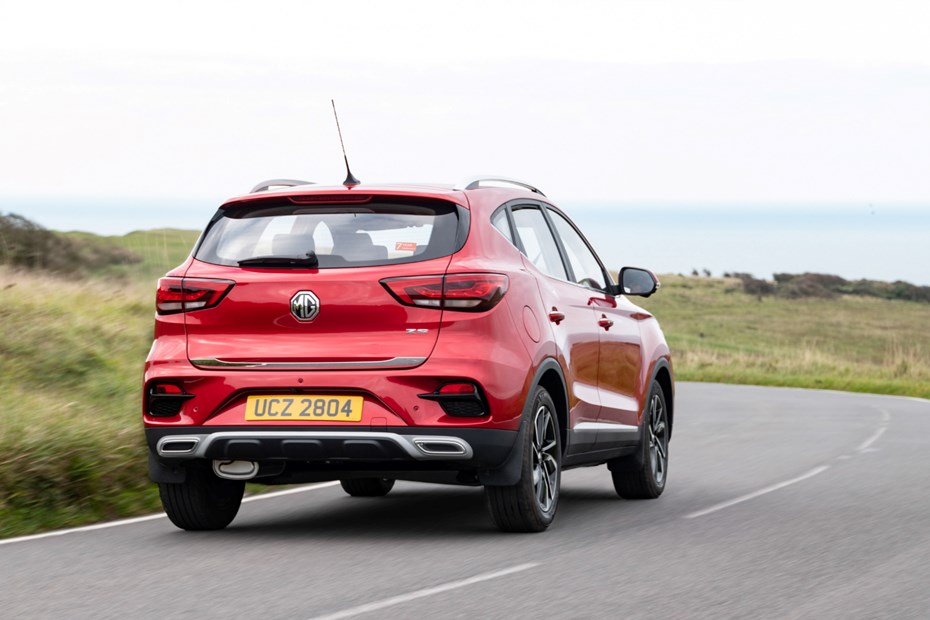
- Just two petrol engines on offer
- Both provide unremarkable performance
- Not especially satisfying to drive
Petrol engines
There are two petrol engines available in the MG ZS. First up, there’s the 1.5-litre VTi-tech. It has a modest horsepower rating of 106hp, and 141Nm of torque. Coupled to a five-speed manual gearbox – which we think feels rather old school, these days – it’s happy to be revved out while accelerating but ultimately doesn’t feel especially muscular, particularly on motorways. It’s also rather loud and coarse.
We recommend getting the more powerful turbocharged 1.0-litre T-GDI engine instead. It’s 111hp and 160Nm of torque may not look like significant gains on paper – and the engines’ 0-62mph times are virtually identical. But, in practice, we think it feels more willing and has deeper reserves of pulling power at higher speeds. It’s smoother and quieter, as well. Choose between manual or automatic gearboxes, both with six speeds.

In the grand scheme, though, even the T-GDI even isn’t as powerful or pleasant as plenty of similar engines offered in rivals such as the Peugeot 2008 and Volkswagen T-Roc.
Alternatively, there’s the quieter, more powerful electric MG ZS EV, which we’ve reviewed separately.
What’s it like to drive?
- Quick steering, decent grip levels
- Ride can be unsettled
- Not much fun to drive
The MG ZS is a perfectly pleasant car for getting from A to B at an unhurried pace. It feels safe and surefooted, the steering is surprisingly quick and accurate. Carry a bit too much speed into a corner and the car’s front wheels gradually push wide; lifting off the throttle brings them make into line.
But there’s no fun or satisfaction to bad. There’s too little feel through the steering wheel for our testers’ tastes, and that leaves you feeling rather isolated from what’s going on. Rivals such as the Ford Puma and Suzuki Vitara are more involving and satisfying.

The ride can be unsettled, with the odd crash and bang transmits from the suspension to the rest of the car. There’s pronounced body lean in faster corners, as well, which forces you to drive a bit slower. Passengers may not appreciate it, either. The Skoda Kamiq feel much more in control of itself.


